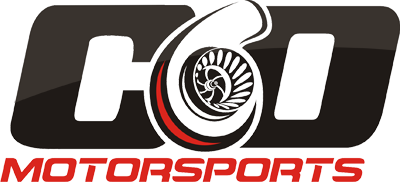BorgWarner AirWerks S476SX aka 10587 76mm S400SX (179176)
BorgWarner’s 76mm S400SX turbocharger is one of the most potent 76mm large-frame turbos available. This design pairs a 104.84mm OD FMW billet compressor wheel with a high flowing 87mm S400SX turbine wheel. This combination provides huge exhaust flow energy without restriction. Bolt-on for many twinscroll T4 manifolds and 4? downpipes.



Compressor Specifications
- Compressor Wheel Exducer: 104.84mm
- Compressor Wheel Inducer: 76mm
- Max Flow Rate: 107 lbs/min
- Max Recommended Turbo Speed: 561 m/s
- Compressor Housing Connections:
- Inlet: 5.5? Hose Coupler
- Outlet: 3.0? Hose Coupler
Turbine Specifications
- Turbine Wheel Exducer: 81.74mm
- Turbine Wheel Inducer: 87mm
- Housing Size and A/R ratio: S476SX 10587 is available in four (4) different turbine housing configurations:
- 0.90 A/R Divided T4 Twin Scroll Inlet
- 1.00 A/R Divided T4 Twin Scroll Inlet
- 1.10 A/R Divided T4 Twin Scroll Inlet
- 1.25 A/R Divided T4 Twin Scroll Inlet
Turbine outlet: 4? V-Band
BorgWarner’s S400SX 76mm Turbo Features:
- 5.5? inlet / 3? outlet compressor housing
- All-new severe duty 360 degree thrust bearing
- Interchangeable with existing turbine housings
- 87mm turbine wheel
The compressor stage starts with a ported shroud housing, including integrated velocity stack. Compressor wheel is BorgWarner’s “FMW” forged-milled-wheel (AKA forged-billet) and uses the latest generation blade aero to reach 111 lb/min max compressor flow. This is a journal bearing oil cooled only turbocharger ideally suited to competitive drag racing.
This turbo is an excellent choice for a Drag Race B-series engine. The airflow this turbo generates compliments high flowing VTEC cylinder heads and 87mm turbine wheel nicely. The S400SX turbos will fit Full-Race twinscroll turbo manifolds and 4? downpipes.
About Twin Scroll
Twin scroll turbo system design addresses many of the shortcomings of single scroll turbo systems by separating those cylinders whose exhaust gas pulses interfere with each other. Similar in concept to pairing cylinders on race headers for N/A engines, twin-scroll design pairs cylinders to one side of the turbine inlet so that the kinetic energy from the exhaust gases is recovered more efficiently by the turbine. For example, if a four-cylinder engine’s firing sequence is 1-3-4-2, cylinder 1 is ending its expansion stroke and opening its exhaust valves while cylinder 2 still has its exhaust valves open (while in its overlap period, where both the intake and exhaust valves are partially open at the same time). In a single scroll AKA undivided manifold, the exhaust gas pressure pulse from cylinder 1 is therefore going to interfere with cylinder 2’s ability to expel its exhaust gases, rather than delivering it undisturbed to the turbo’s turbine the way a twin scroll system allows.
The result of the superior scavenging effect from a twin scroll design is better pressure distribution in the exhaust ports and more efficient delivery of exhaust gas energy to the turbocharger’s turbine. This in turn allows greater valve overlap, resulting in an improved quality and quantity of the air charge entering each cylinder. In fact, with more valve overlap, the scavenging effect of the exhaust flow can literally draw more air in on the intake side while drawing out the last of the low-pressure exhaust gases, helping pack each cylinder with a denser and purer air charge. As we all know, a denser and purer air charge means stronger combustion and more power… but the benefits of twin scroll design don’t end there. With its greater volumetric efficiency and stronger scavenging effect, higher ignition delay can be used, which helps keep peak combustion temperature in the cylinders down. Since cooler cylinder temperatures and lower exhaust gas temperatures allows for a leaner air/fuel ratio, twin scroll turbo design has been shown to increase turbine efficiency by 7-8 percent (faster spool, quicker response) and result in fuel efficiency improvements as high as 5 percent. It is wise to size the turbine housing A/R larger than the single scroll turbine A/R typically used!
Additional Information:
- Max warm oil pressure: 5 bar (73.5psi)
- Max cold oil pressure: 8 bar (118psi)
- When starting a fresh engine build or in extremely cold climates - oil pressure must reach 0.5bar (7.2psi) within 4 seconds maximum.
- Do not load the engine with full boost and WOT until full operating oil pressure is present
- Do not load the engine with full boost and WOT if any boost leaks are present (this can result in turbocharger overspeed)
Airwerks® Series Turbochargers
Simple. Scalable. Strong.
Airwerks turbochargers are designed for the competitive motorsports market as well as drivers retrofitting a naturally aspirated engine or looking for a little more performance from a factory turbocharged car.
Engineered specifically for drag racing, pulling, and road racing, AirWerks turbochargers have earned a reputation as robust, brute-force induction systems. Looking for a no-frills replacement? Want to upgrade your turbocharger? Working with limited space? BorgWarner’s AirWerks turbochargers are the perfect go-to product for many applications.
With a twin hydrodynamic journal bearing design, AirWerks turbochargers feature an effective high-pressure ratio compressor stage, extended-tip technology and a high-efficiency turbine stage. The configuration provides ultra-fast response and more than 70 PSI of boost.
| Manufacturer | BorgWarner |
|---|


